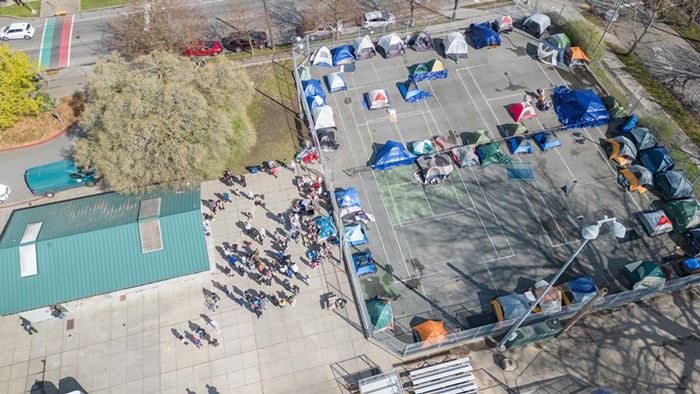
You probably already know that an armed gang has taken over a federal building at the Malheur National Wildlife Refuge in southeastern Oregon. According to Ammon Bundy, one of the leaders of the group, the so-called "militia men" are protesting the federal government's "taking of people's land and resources."
By "people," Bundy means ranchers. Bundy claims that his protest was spurred by the sentencing of two local ranchers to five years in prison for setting fire to federal land.
But long before Ammon Bundy and his friends arrived, the Paiute people had lived in the Malheur Basin for thousands of years. The process by which natives were dispossessed of their homeland follows a pattern that took place all across the West: dehumanization, pillaging, war, murder, theft, and rip-offs.
Here's the Burns Paiute Tribe's account of how ranchers took lands and resources from the Paiute, who now maintain a reservation in Harney County:
Settlers first moved into what is now Harney County as late as 1862, years after settlers poured into western Oregon. Cattlemen then quickly began to take land or buy up homesteads to run their huge herds of livestock over the land. The limits of the native ecology were severely stressed due to the grazing of livestock by the expanding foreign population and the increase in hunting and fishing by those same people. Resources depended upon by the Paiute people were depleted or destroyed.
During these years the fighting between the Indians and the encroaching Whites became bitter, with the raids on wagon trains and army surveyors increasing. Punishing parties were sent out by the Whites to kill any Indian seen, whether man, woman or child. The Indians were fighting for their land, culture and their very lives.
A century later, the Paiute received damages for the loss of some of their land. They were paid less than $0.50 an acre.
Environmental historian Nancy Langston has more detail on the ranchers, homesteaders, and natives in the Malheur Basin in her book, Where Land and Water Meet:
Ranchers and homesteaders found common cause not just in their economic shared interests but, even more powerfully, in their opposition to the Paiute, who had made the basin their home for some thirteen thousand years. For all their differences, hating the Paiute gave ranchers and homesteaders a powerful sense of shared identity as whites. To lay claim to the basin for themselves, they believed they had to deny the Paiute's claim to a home and physically expel them.
In an ironic twist, Langston also documents how the US army provided one of the biggest demands for ranchers' beef and hay. When the army left the area after the 1878 Paiute rebellion, owners of small herds were devastated.
Perhaps cattle ranchers of the West owe some of their original survival to the federal government. And perhaps the federal government owes its survival in the West to some of those ranchers, too.
I'm on the Paiute reservation, also known as the actual original owners of the land everyone is fighting about. pic.twitter.com/AszoItnihF
— Dana Liebelson (@dliebelson) January 4, 2016
UPDATE: Burns Paiute Tribe chairperson Charlotte Rodrique told The Stranger that she would not dignify the "Constitutional Freedom" group's movement with a formal statement from the tribe, but would comment as an individual.
"I do not condone the actions of the 'Constitutional Freedom' group who have taken over occupation of the Malheur National Wildlife Refuge Headquarters," Rodrique wrote in an e-mail. "I believe there is little local support for their 'cause'. I have not observed many 'locals' at their gatherings. As a tribal member, I will not dignify their movement with a formal statement. The leaders [of the group] have taken it upon themselves to speak on issues that are of no concern to tribal interests. They seem to be motivated by greed and anger."
This post has been updated.

















